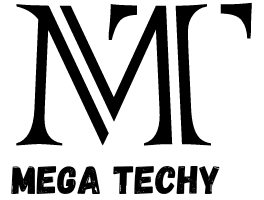In today’s digital environment, business technology is essential for fostering growth, innovation, and efficiency. To remain competitive, optimize processes, and satisfy the needs of a market that is changing quickly, companies of all sizes, from start-ups to multinational conglomerates, are depending more and more on cutting edge technology. This post will discuss business technology’s various facets, how it’s changing various industries, and how to use it successfully in your company.
What is Business Technology?
Information technology (IT) used to support and improve business operations is referred to as business technology. This covers everything from straightforward software programs to intricate systems like CRM and enterprise resource planning (ERP) software. Business technology encompasses a broad spectrum of instruments and frameworks that assist institutions in streamlining workflows, scrutinizing data, enhancing correspondence, and augmenting efficiency.
Key Components of Business Technology
- Hardware: Servers, computers, networking equipment, and other physical devices.
- Software: Operating systems, applications, and specialized software for specific business functions.
- Networks: Internet connectivity, intranets, and cloud-based systems.
- Data Management: Databases, data warehouses, and business intelligence tools.
- Cybersecurity: Measures to protect business data and IT infrastructure from threats.
The Role of Business Technology in Modern Enterprises
Enhancing Efficiency and Productivity
Business technology helps automate routine tasks, allowing employees to focus on more strategic activities. Automation tools, such as robotic process automation (RPA), can handle repetitive tasks like data entry, freeing up time for employees to focus on innovation and problem-solving.
- Automation of routine tasks: Reducing manual effort.
- Streamlining workflows: Improving process efficiency.
- Real-time data access: Allowing for quicker decision-making.
Driving Innovation
Technology enables businesses to innovate in ways that were previously unimaginable. Whether it’s developing new products, improving customer service, or finding new markets, technology plays a key role in fostering innovation.
- Product development: Using technology to create and test new products.
- Customer experience: Enhancing customer interactions through AI and chatbots.
- Market expansion: Leveraging e-commerce and digital marketing to reach global audiences.
Improving Communication and Collaboration
Effective communication is crucial for any business. Technology facilitates communication through various tools and platforms, enabling teams to collaborate seamlessly, regardless of their location.
- Collaboration tools: Slack, Microsoft Teams, and Zoom for remote teamwork.
- Project management software: Asana, Trello, and Jira for tracking progress.
- Cloud storage: Google Drive, Dropbox, and OneDrive for sharing and accessing documents.
Enhancing Customer Relationship Management
Customer relationship management (CRM) systems help businesses manage interactions with current and potential customers. These tools allow companies to track customer data, manage sales pipelines, and personalize marketing efforts.
- CRM systems: Salesforce, HubSpot, and Zoho CRM.
- Customer data analytics: Analyzing customer behavior to improve service.
- Personalized marketing: Tailoring marketing messages based on customer data.
Enabling Data-Driven Decision Making
With the advent of big data, businesses have access to vast amounts of information that can be analyzed to make informed decisions. Business intelligence (BI) tools help organizations make sense of this data, providing insights that drive strategy and operations.
- Data analytics: Tools like Tableau, Power BI, and Google Analytics.
- Predictive analytics: Forecasting trends and customer behavior.
- Real-time reporting: Providing up-to-date insights for decision-making.
Ensuring Business Continuity
Business technology is essential for maintaining operations during disruptions, whether due to natural disasters, cyberattacks, or other emergencies. Backup systems, cloud storage, and cybersecurity measures help ensure that businesses can continue to operate without significant downtime.
- Disaster recovery plans: Ensuring data and systems can be restored quickly.
- Cloud computing: Accessing business systems remotely.
- Cybersecurity: Protecting business data from threats.
Steps to Implement Business Technology in Your Organization
Implementing business technology requires careful planning and execution. Here’s a step-by-step guide to help you integrate technology into your business operations:
1. Assess Your Business Needs
Before implementing any technology, assess your business needs. Identify areas where technology can improve efficiency, reduce costs, or enhance customer service.
- Conduct a needs assessment: Evaluate current processes and identify pain points.
- Set clear goals: Define what you want to achieve with the new technology.
- Involve stakeholders: Get input from different departments to ensure the technology meets everyone’s needs.
2. Choose the Right Technology
Select the technology that best fits your business needs. Consider factors such as cost, scalability, ease of use, and integration with existing systems.
- Research available options: Compare different technologies that meet your needs.
- Consider scalability: Ensure the technology can grow with your business.
- Evaluate costs: Consider both initial investment and ongoing maintenance.
3. Develop a Technology Implementation Plan
Create a detailed plan for implementing the new technology. This should include timelines, responsibilities, and resources needed.
- Define the scope: Clearly outline what the implementation will cover.
- Set a timeline: Establish a realistic timeline for each phase of the implementation.
- Assign responsibilities: Designate team members to lead different aspects of the implementation.
4. Train Your Employees
Proper training is essential for the successful adoption of new technology. Ensure that your employees are comfortable using the new tools and systems.
- Provide comprehensive training: Offer workshops, tutorials, and hands-on practice sessions.
- Create user guides: Develop easy-to-follow documentation to help employees learn the new technology.
- Offer ongoing support: Ensure help is available for employees who encounter difficulties.
5. Monitor and Evaluate the Implementation
After the technology has been implemented, continuously monitor its performance and evaluate its impact on your business.
- Track key performance indicators (KPIs): Measure the technology’s effectiveness in achieving your goals.
- Gather feedback: Solicit input from employees and customers on how the technology is working.
- Make adjustments: Be prepared to tweak the implementation based on feedback and performance data.
6. Ensure Ongoing Maintenance and Updates
Technology is constantly evolving, so it’s important to keep your systems up to date. Regular maintenance and updates will ensure that your technology continues to meet your business needs.
- Schedule regular updates: Keep software and systems up to date with the latest features and security patches.
- Perform routine maintenance: Regularly check and maintain hardware and software to prevent issues.
- Stay informed: Keep up with the latest technology trends and advancements to ensure your business remains competitive.
Comparison of Business Technology Tools
Here’s a comparison table of some popular business technology tools across different categories:
| Category | Tool | Key Features | Ideal For |
|---|---|---|---|
| CRM | Salesforce | Comprehensive CRM, customizable, AI-powered | Large enterprises, B2B firms |
| HubSpot | User-friendly, integrated marketing tools | Small to medium businesses | |
| Zoho CRM | Affordable, scalable, multi-channel support | Small businesses, startups | |
| Project Management | Asana | Task management, team collaboration, reports | Remote teams, startups |
| Trello | Visual task boards, easy to use, flexible | Small teams, creative projects | |
| Jira | Agile project management, issue tracking | Software development teams | |
| Data Analytics | Tableau | Data visualization, easy integration, BI | Data-driven organizations |
| Power BI | Real-time analytics, Microsoft integration | Enterprises using MS products | |
| Google Analytics | Web analytics, SEO insights, free tier | Digital marketers, e-commerce | |
| Communication | Slack | Team messaging, integrations, searchable history | Remote teams, tech companies |
| Microsoft Teams | Video conferencing, Office 365 integration | Large organizations, corporates | |
| Zoom | HD video conferencing, webinars, screen sharing | Remote work, education |
Challenges in Implementing Business Technology
Resistance to Change
One of the biggest challenges in implementing new technology is resistance from employees. Change can be difficult, especially if employees are comfortable with existing systems.
- Solution: Communicate the benefits of the new technology and involve employees in the implementation process to reduce resistance.
High Initial Costs
Implementing new technology can be expensive, particularly for small businesses with limited budgets.
- Solution: Consider phased implementation or start with the most critical areas to spread out costs over time.
Integration with Existing Systems
New technology may not always integrate smoothly with existing systems, leading to potential disruptions.
- Solution: Work with vendors to ensure compatibility and plan for any necessary upgrades or modifications to existing systems.
Cybersecurity Risks
As businesses become more reliant on technology, they also become more vulnerable to cyberattacks.
- Solution: Invest in robust cybersecurity measures and regularly update your systems to protect against new threats.
FAQs About Business Technology
Q1: What is the most important technology for small businesses?
A1: For small businesses, cloud computing is often the most important technology, as it allows for scalable, cost-effective solutions that can grow with the business.
Q2: How can technology improve customer service?
A2: Technology can improve customer service by enabling faster response times, personalized interactions, and 24/7 support through chatbots and automated systems.
Q3: What are the risks of not updating business technology?
A3: Failing to update technology can lead to inefficiencies, increased vulnerability to cyberattacks, and a competitive disadvantage.
Q4: How do I choose the right business technology for my company?
A4: Assess your business needs, set clear goals, research
Conclusion
Business technology is an essential component of modern enterprises, driving efficiency, innovation, and growth. By leveraging the right tools and systems, businesses can streamline operations, improve communication, enhance customer relationships, and make data-driven decisions that propel them forward in a competitive market.
However, successful implementation of business technology requires careful planning, the right choices, and continuous monitoring to ensure it meets the evolving needs of the organization. While challenges such as resistance to change, high costs, and cybersecurity risks exist, they can be managed with the right strategies and foresight.




